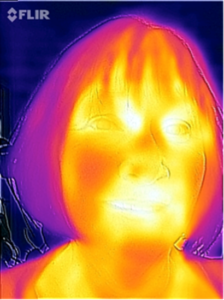Therminic short-course 2023
Introduction to measurement system analysis and sample size estimation
A large part of R&D work is based on the ability to accurately identify a difference in outcome, for example the Temperature in situation A as opposed to situation B. But how much of the difference is due to the difference between A and B? And if you do not measure a difference – does this mean that condition A or B truly has no influence? Or could there be a random fluctuation that negates the effect? And if the output is not numerical, but rather a classification into different categories, how trustworthy is this classification? Do you yourself, or your team, rate classes in a repeatably similar manner?
This short course provides a step-by-step approach to assessing and quantifying random variation and establish the number of repeat measurements to come to a to statistically valid analysis. The examples in are thermally based, but the statistics are equally valid for other domains. The statistics skill is essential for all classical experimentalists, but also as a precursor to Digital Twin validation and to assess consistency of appraisers for labelled data, for example training data for Artificial Intelligence.
The short course will treat the following topics:
A: Numerical outcomes
- Is there a difference?
(Normal distribution, distribution of sample mean, standard error of the mean, central limit theorem, hypothesis testing, 2 sample t test). - What is the probability to see a difference if it is really there? Or to see a difference by coincidence, when it is not really there?
(Significance (FPR), Confidence (TPR), Power (TNR), Beta error (FNR)). - Difference between more than 2 groups (ANOVA)
- How large is my random measurement error? And is this acceptable?
(Gage Repeatability and Reproducibility, AIAG acceptability guidelines.) - How many repeats do I need? (Power, effect, standard deviation, sample size)
- How to make the most of limited resources – split repeats over multiple experiments
(‘Pooling’ variation, Sample size for DOE’s and RSM’s)
B: Categorical outcomes
- Is there a difference in proportions?(Normal approximation to the binominal, 2 sample p test.)
- What if there are more than 2 groups? (Chi-square goodness of fit, Chi-square test for association)
- Are the appraisers in agreement?
(Fleiss Kappa attribute agreement, with/ without standard.) - How many samples do I need? (Sample size estimation)
Examples will be provided for statistics use with a commercial spreadsheet application and for use of a stand-alone commercial statistics tool. The spreadsheet examples can be transferred to other mathematical softwares of you own preference.
The short course is 9.00 – 17.00 on September 26th, 2023. 2 coffee breaks and course book are included in the price. A limited number of student places is available at 25% student discount.
 Wendy Luiten is Master Black Belt and Electronics Cooling expert with 35+ years of industry experience. She was Senior thermal specialist at Philips Research Eindhoven for 30+ years, lectures at the HighTech Institute Eindhoven for 10+ years, and she is Master Black Belt in innovation oriented DIDOV – Design for Six Sigma, and part of the DfSS core team of Philips in Eindhoven.
Wendy Luiten is Master Black Belt and Electronics Cooling expert with 35+ years of industry experience. She was Senior thermal specialist at Philips Research Eindhoven for 30+ years, lectures at the HighTech Institute Eindhoven for 10+ years, and she is Master Black Belt in innovation oriented DIDOV – Design for Six Sigma, and part of the DfSS core team of Philips in Eindhoven.
Wendy Luiten is the author of 30+ papers and holds 6 patents and pending patents. She received the best paper award at SEMI-THERM 2002, the Harvey Rosten award for Excellence in 2014 and the Philips Research Outstanding Achievement award in 2015, and is a long term member of the program committee of both Therminic and Semitherm.
Newsletter
Don´t miss important dates, deadlines and announcements with the Therminic Newsletter.
